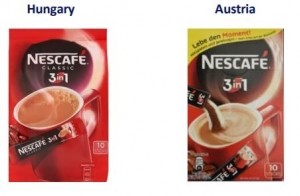FDE: ‘Products may be different but there’s no East-West divide’
No evidence of lower quality foods in Eastern Europe, says Commission

The high level forum meeting, 'For a Better Functioning Food Supply Chain', was held on Tuesday (20 June) and attended by representatives of the food industry, NGOs and consumer groups.
A statement issued by the Commission said: “The evidence received by the Commission from 21 member states does not, for the moment, reveal serious market anomalies [such as] the existence of structurally different, lower quality products or products of a lower nutritional content in European markets, particularly in the Eastern European countries, which have raised this potential problem.”
Stakeholders at the meeting agreed to continue to discuss the issue within the scope of the forum, as well as through the cooperation network of consumer protection authorities.
The issue has come to the fore in recent months, and Hungary recently notified the Commission of a draft law that would see manufacturers required to place 'warning labels' on foods of lower quality.
East, West and problem tests
Deputy director general and director of consumer information and nutrition at industry trade group FoodDrinkEurope (FDE) Dirk Jacobs told stakeholders that different recipes did not necessarily mean dual quality.
Igloo fish fingers sold in Slovakia have a lower fish content (58%) than the same branded product in Austria (65%) but products sold in the UK, Netherlands and Portugal also have 58%. “The product is different but no evidence of an East-West divide,” he said in a presentation.
Inadequate testing methods used to compare products is another problem, Jacobs said, done in only a few member states and on a limited number of products.
Testing may not have been carried out on a like-for-like basis, instead selecting different sub-brands, production dates or different shelf life stages.
To illustrate potential pitfalls, Jacobs gave the example of two Nestlé products sold in Hungary (Nescafé Classic 3 in 1) and Austria (Nescafé 3 in 1).
“The two products are not comparable as [they] are two different variants of the brand. As displayed on the Austrian packaging, there is an intended presence of a thin crema layer on the top of the beverage. This creamy recipe is also sold in Hungary under the name Nescafé Crema 3 in 1.”
The Hungarian product contains 9% coffee and sweeteners including sugar and glucose syrup, while the Austrian product has 7.9% coffee, contains more additives and caramelised sugar
FDE also wants to see robust EU-harmonised testing protocols put in place. The Commission said its Joint Research Centre would try to establish a common methodology in order to better take into account comparative studies carried out by national authorities.
Reasons for rogue recipes
Manufacturers may tweak recipes according to the region for a number of reasons, Jacob told stakeholders, such as adapting flavours to cater to local culinary traditions or due the perception of certain ingredients.
Local sourcing initiatives centred around food waste prevention or national rules (such as mandatory fortification) may also have an impact on product composition, while
manufacturers must also take into account affordability – products that aren’t affordable won’t make it to supermarket shelves, he said.
According to a 2016 Council conclusion on product improvement, manufacturers are permitted to vary the pace and scope of product reformulation.
“Cultural differences in preferences and dietary patterns can partly determine the approach, the pace of reduction of salt, saturated fat, added sugars and the final results. Every approach should acknowledge those cultural differences and dietary patterns.
“Local and traditional foods, including geographical indications, intrinsically tied to a country's culture and heritage, could be subject to special consideration, taking into account the national situation, for example their contribution to the overall dietary intake.”
Next steps
"Food and brand manufacturers are ready to collaborate with authorities to provide further transparency by clarifying on a case-by-case basis why recipes are different, and to work together with national Consumer Protection Authorities to address perceptions of concerned citizens," said FDE.
This could be through factory open days where manufacturers show their production plants to the general public, it suggested.
The next forum meeting is expected to take place in October.























